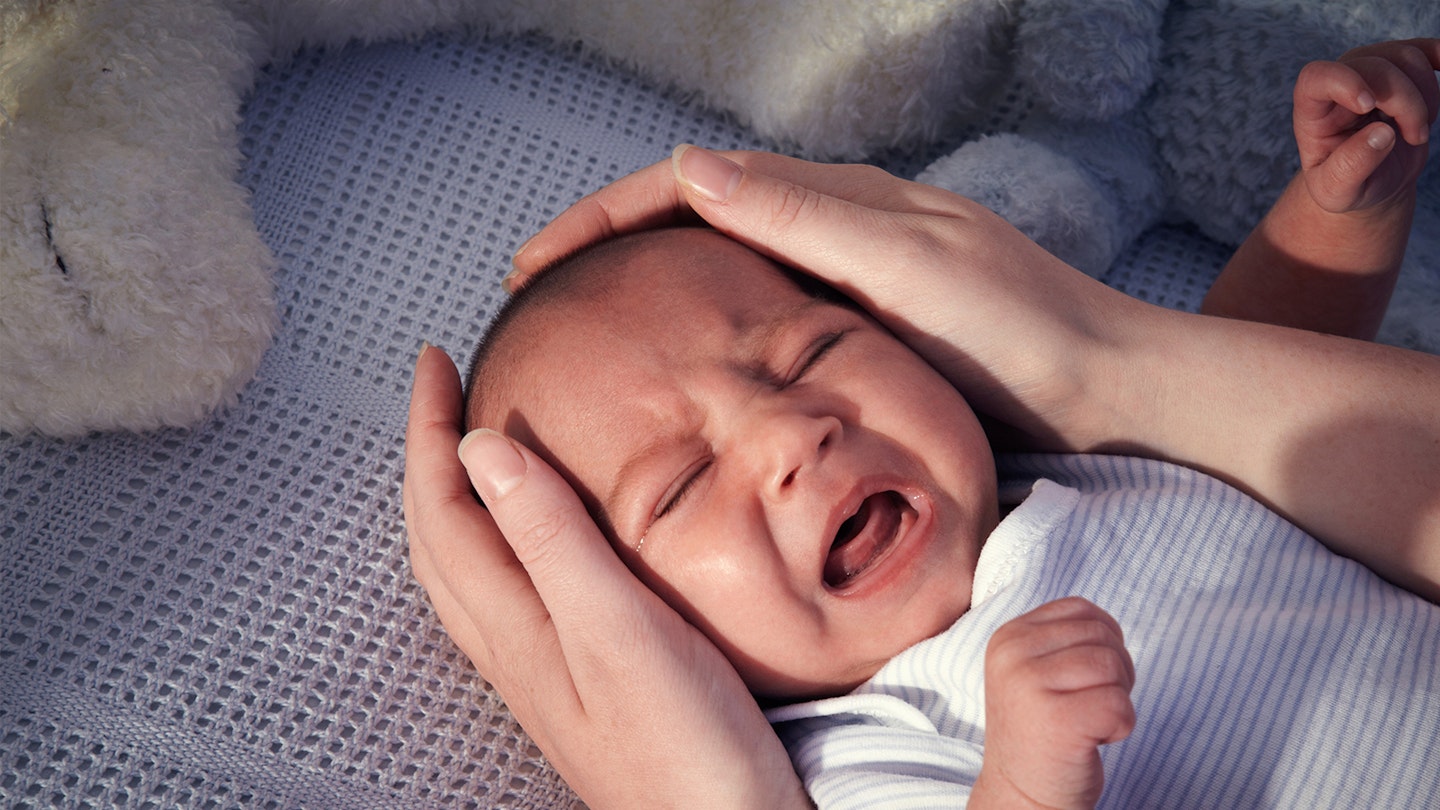It’s a question all new mums ask on a daily basis - why is my baby crying? Discover the clues that can help you work out the reason behind your baby’s tears - read our expert advice and find out how you can help your little one.
It might seem unbelievable, but there’s a growing body of research to suggest you may be able to decipher your baby’s cries. As yet, there’s no evidence-based method to translate a baby’s wails. But research shows that babies, particularly when very young, use behavioural and vocal cues to let their parents know what’s wrong before breaking into tears. Crying, it seems, is a last resort.
Along with your instincts as a mum – no one knows your baby quite as well as you – this research could help you work out why your baby might be crying. Which, of course, puts you one step closer to getting her to stop.
Here are the main crying cues:
Hunger
She may suck her fist or fingers, stick their tongue out, smack her lips or turn her face towards physical stimulation. The cry may be rhythmic and repetitive, becoming louder and unrelenting.
Discomfort
Your baby may be restless and unsettled. She may grumble rather than cry. The sound may be a breathy whimper that might take a fairly long time to build to a full cry if no one responds.
Tiredness
She may be restless and rub her eyes, which may look glazed. Her cries may be breathy and intermittent, from full cries to quieter fussing, but growing in intensity. She may be easily soothed and it could be a common cry if you're trying different sleep training methods.
Pain
Her cry may be harsh, high-pitched and intense from the start. There may be pauses as she catches her breath. Her eyes may be shut and she may frown. Her mouth may remain open.
Fear
Her eyes may stay mostly open as she cries. She may have an intense, penetrating look. She could pull back her head. The cry may gradually increase in tension, ending in explosive bursts.
Too much stimulation
Jerky movements may be noticeable and she might turn her head away from you or try to bat things away with her hands. The cry may be staccato and alternate with what sounds a little like laughter.
Wind or colic
She may fidget, squirm, grimace and draw her knees to her chest. Staccato, grunting cries may indicate wind, but a shrill, unrelenting and inconsolable cry may accompany colic in babies.
Gripe water may help remedy the discomfort caused by digestion problems.
Feeling sick
Most mums will recognise this cry as ‘not quite right’ or ‘different from normal’. It may sound weak, be sad and pitiful or might be high-pitched and continuous. It will usually accompany other symptoms.
Scientists have discovered that one type of crying sounds distinctly different from all the others. ‘Pain cries are often produced with more energy, so are louder,’ explains Stephen Sheinkopf, assistant professor of psychiatry and human behaviour, and co-developer of a computer programme capable of analysing babies’ cries. ‘There are also longer grumblings in the beginning phrases of each crying episode and longer pauses, or breath-holding, in between these,’ he adds.
Being aware of your baby’s behavioural cues could help you to respond in a way that halts the crying.
By watching your baby carefully, you should be able to learn to recognise her vocal and behavioural cues
When a baby cries, tension mounts in her facial muscles, particularly around her forehead, eyebrows and lips. According to the Spanish research, if your baby is angry, her eyes will be half-closed when crying and her mouth either open or half open.
If your baby is afraid, her eyes will remain open with a penetrating stare. If she’s in pain, she will shut her eyes, opening them only for a few moments. Her face will look tense and she will appear to frown.
By watching your baby carefully, you should be able to learn to recognise her vocal and behavioural cues.
However, it’s vital to catch your baby before she gets too upset. The more inconsolable a baby becomes, the less distinct her cues become. Often, these are at their strongest before a baby cries.
The cues are also more obvious at a younger age. ‘An infant’s cries change with age, as the anatomy of the vocal tract changes,’ says Stephen. Babies also begin to pick up social cues as they mature. By seven months, your baby may even have mastered the art of ‘fake crying’ in order to maintain your attention.
Now read:
